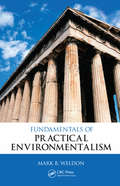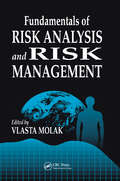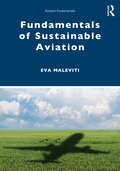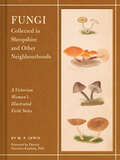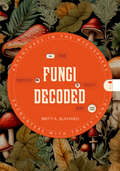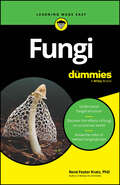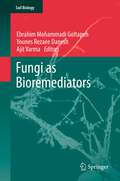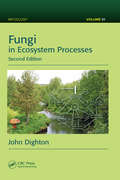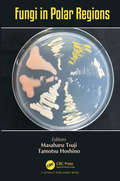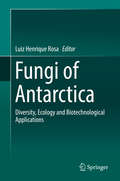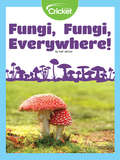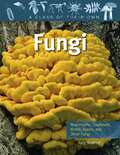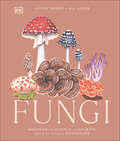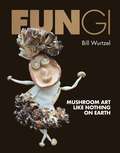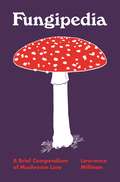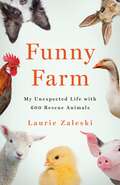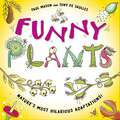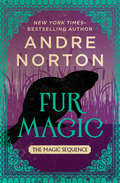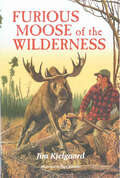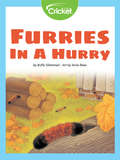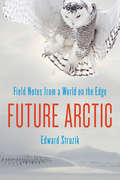- Table View
- List View
Fundamentals of Practical Environmentalism (Social Environmental Sustainability)
by Mark B. WeldonEnvironmental decisions present themselves every day in forms large and small. Should I walk to work today? What about global warming-should I write my congressperson and demand that the government do something? Should I put solar panels on my roof? Should I get a different car or turn up the temperature on the air conditioner or get water-saving f
Fundamentals of Risk Analysis and Risk Management
by Vlasta MolakThis book bridges the gap between the many different disciplines used in applications of risk analysis to real world problems. Contributed by some of the world's leading experts, it creates a common information base and language for all risk analysis practitioners, risk managers, and decision makers.Valuable as both a reference for practitioners and a comprehensive textbook for students, Fundamentals of Risk Analysis and Risk Management is a unique contribution to the field. Its broad coverage ranges from basic theory of risk analysis to practical applications, risk perception, legal and political issues, and risk management.
Fundamentals of Rural Development
by Bikram Keshari PattanaikThe book expounds on the functioning of rural development as well as the practical problems encountered in the formulation of rural development policies and programmes. It provides an exhaustive account of the various sectors and actors of rural development and presents it as a multidimensional concept by documenting its different components. It also details the paradigms and strategies of rural development adopted by developed and developing countries of the world.This volume deals with rural cooperatives and livelihood in order to understand how the development process can be self-sustained and sustainable, following the vocal for local mantra. It also extensively discusses rural basic needs, poverty, employment, the role of Panchayati Raj institutions, the corporate sector, NGOs, peoples’ participation, and capacity building in rural development.This book will be useful to undergraduate and postgraduate students, researchers, and teachers of development studies, economics, sociology, political science, and public administration. It will be useful for the administrators and development administration officials of state and central government, planners, policymakers, and people working in NGOs and corporate sector functionaries dealing with corporate social responsibilities especially those handling developmental issues and challenges.
Fundamentals of Sustainable Aviation (Aviation Fundamentals)
by Eva MalevitiFundamentals of Sustainable Aviation is the first textbook to survey the critical field of sustainability within the aviation industry. Taking a systems thinking approach, it presents the foundational principles of sustainability and methodically applies them to different aviation sectors. Opening with the basics of sustainability, emphasising the Sustainable Development Goals, the book then considers the environmental, economic and social dimensions of aviation. The following chapters apply these insights to aviation design, supply chains, operations, maintenance and facilities. The final chapter examines the concept of resilience in sustainable aviation. Overall, the textbook shows how future sustainability can be achieved by making better decisions today. Students are supported with international case studies throughout the book. Slides, test questions and a teaching manual are available for instructors. This textbook is the ideal resource for courses on sustainable aviation globally and will also be of great interest to professionals in the field.
Fundamentals of Sustainable Aviation (ISSN)
by Eva MalevitiFundamentals of Sustainable Aviation is the first textbook to survey the critical field of sustainability within the aviation industry. Taking a systems thinking approach, it presents the foundational principles of sustainability and methodically applies them to different aviation sectors.Opening with the basics of sustainability, emphasising the Sustainable Development Goals, the book then considers the environmental, economic and social dimensions of aviation. The following chapters apply these insights to aviation design, supply chains, operations, maintenance and facilities. The final chapter examines the concept of resilience in sustainable aviation. Overall, the textbook shows how future sustainability can be achieved by making better decisions today.Students are supported with international case studies throughout the book. Slides, test questions and a teaching manual are available for instructors. This textbook is the ideal resource for courses on sustainable aviation globally and will also be of great interest to professionals in the field.
Fungi Collected in Shropshire and Other Neighbourhoods: A Victorian Woman's Illustrated Field Notes
by M. F. LewisVenture into the woods alongside a pioneering female mycologist. This one-of-a-kind, keepsake volume celebrates the timeless fascination of fungi.Very little is known about M. F. Lewis—not even her first name. Mysterious, prolific, and deeply enamored with the world of mushrooms, she left us a treasure trove of mycological illustrations. For over forty years, from 1860 to 1902, Lewis rambled across England and Wales, recording an astonishing biodiversity of fungi. Her delicately drawn, boldly colored images evoke the strange and powerful beauty of this kingdom. This handsome volume collects hundreds of Lewis's watercolors, contextualized by a foreword from mycologist Dr. Patricia Ononiwu Kaishian. It's a must-have for today's mushroom lovers who are curious about the history of mycology and for any admirer of vintage botanical illustration who wants to discover something different.FASCINATING FUNGI: Mushrooms are having a real moment, but they've always captured our imaginations, even in Victorian times. Lewis's gorgeous artwork offers the modern mushroom fan a new way to appreciate their favorite kingdom.VINTAGE AESTHETIC: This lovely clothbound volume evokes the magic of uncovering a treasure in a jumbled vintage bookstore. FEMINIST HISTORY: While little is known of the elusive M. F. Lewis, we can celebrate the legacy that she and other female naturalists of the 19th century left for women in science and art today.ARTFUL SCIENCE: Lewis's illustrated field notes showcase the intersection of art and science at its best.Perfect for:Mushroom hunters, eaters, and admirersFans of cottagecore and goblincore aestheticsCollectors of vintage books and vintage botanical illustrationCollectors of Victorian ephemeraReaders of feminist historyEnvironmentalists, scientists, and artists
Fungi Decoded: Adventures in the Mycosphere--Encounters with Thirty Fungi
by Britt A. BunyardA visual celebration of the Fungus Kingdom, offering an accessible introduction to mycology in its first half before diving into 30 profiles of diverse and astonishing mushrooms.Informed by the latest research, and mycologist Britt Bunyard&’s decades-long relationship with fungi across the globe, Fungi Decoded offers a tour of the world's most intriguing mushrooms, spotlighting well-known fungi such as the Fly Agaric as well as morphological oddities such as Stinkhorns and Bird&’s Nest Fungi. Through in-depth profiles on thirty mushrooms, you will learn about a variety of morphogroups, distributions, habitats, and substrate types. This book also explores the most intriguing questions at the heart of these extraordinarily strange organisms. What makes some fungi glow? Which fungi strangle nematodes? How have fungi changed the course of human history? What happens if you step into a fairy ring of mushrooms? Why do some fungi grow in dung?Featuring vivid illustrations and filled with fascinating information, Fungi Decoded is perfect for both new fungus fans and seasoned mycophiles.Note: This book is not meant for identifying edible mushrooms.
Fungi For Dummies
by Rene Fester KratzDiscover the fundamentals of fungi with this engaging and easy-to-follow book Fungi For Dummies gives you an in-depth view of the wide world of mycology. With this science-focused yet clear and readable book, you'll dig deep into the science of the fascinating organisms that help this planet thrive. Learn about fungi classifications and structures, their uses in and beyond medicine, their importance to environmental sustainability, and how they have shaped human cultures around the world. Go beyond the typical mushroom field guide and get a thorough introduction to the study of mycology that tracks a typical undergraduate course in the field. Grasp the basics of mycology, including how fungi grow and how they differ from plants Discover the role fungi play in ecosystems around the world Learn to classify the different biological structures that appear in fungi Know the various fungal groups and their roles in nature and in human endeavors Perfect for those who want or need to get a grasp on mycology, Fungi For Dummies is an approachable introduction to this essential organism group.
Fungi as Bioremediators
by Ajit Varma Ebrahim Mohammadi Goltapeh Younes Rezaee DaneshBiological remediation methods have been successfully used to treat polluted soils. While bacteria have produced good results in bioremediation for quite some time now, the use of fungi to decontaminate soils has only recently been established. This volume of Soil Biology discusses the potentials of filamentous fungi in bioremediation. Fungi suitable for degradation, as well as genetically modified organisms, their biochemistry, enzymology, and practical applications are described. Chapters include topics such as pesticide removal, fungal wood decay processes, remediation of soils contaminated with heavy and radioactive metals, of paper and cardboard industrial wastes, and of petroleum pollutants.
Fungi in Ecosystem Processes (Mycology #Vol. 17)
by John DightonThis new edition of Fungi in Ecosystem Processes continues the unique approach of examining the roles of fungi from the perspective of ecosystem functions. It explores how fungi have adapted to survive within particular constraints, how they help to maintain homeostasis in ecosystems, how they facilitate resistance to perturbations, and how they influence the communities of other organisms. Updated and revised, the second edition Expands the section on plant pathogens, invasive species, and insect–fungal interactions Provides more extensive coverage on insect–fungal interactions, including entomopathogens, the links between entomopathogens and endophytes, and symbiotic and mutualistic interactions Adds a new section on fungi in the built environment Presents new material on below-ground to above-ground interactions mediated through fungi, such as mycorrhizal signaling systems for herbivory defense The book also includes expanded coverage of the role of fungi in suppressive soils, aquatic and marine fungi, modern methods of following food chains in fungal–invertebrate trophic interactions, and the physiology of nutrient uptake by mycorrhizae. A necessary update and expansion to previous material, this book provides an essential reference on the current understanding of fungal roles in ecosystem processes. It also identifies directions for future study, including an emphasis on the need for further research on fungi in built environments.
Fungi in Polar Regions
by Masaharu Tsuji Tamotsu HoshinoFungi that inhabit polar-region can grow and decompose organic compounds under subzero temperatures play important roles in the nutrient cycle of polar-region ecosystems. Thus, changes in the mycoflora affect the ecological recycling in these regions, and understanding the cold-adaptation strategies of fungi under extreme environments is critical for a better understanding of polar-region ecosystems. Due to their ability to survive under extreme environments, fungi in polar-region are seen to show potential for utilization in biotechnologies. This book presents our current understanding of the mycoflora in polar-region and their cold adaptation strategies, and applied studies using their abilities.
Fungi of Antarctica: Diversity, Ecology and Biotechnological Applications
by Luiz Henrique RosaThis book focuses on the fungi found in one of the most pristine regions on Earth: Antarctica. It discusses the fungal occurrence in all substrates of the region, including soil, seawater, lake and marine sediments, rocks, ice, and snow. It also addresses the impact of climate changes on these organisms, the genomic techniques developed to study them, and how a number of compounds, such as antibiotics and enzymes, produced by the Antarctic fungi can be used in medicine, agriculture and the chemical industry.
Fungi, Fungi, Everywhere!
by Gail JarrowWhat comes to mind with you think of fungi? Is it mushrooms, or perhaps mildew? Mold and yeast are fungi, too! Learn all about how fungi reproduce with spores, and how their bodies are made up of mycelium!
Fungi: Classifying Mushrooms, Toadstools, Molds, Yeasts, and Other Fungi (Class of Their Own)
by Judy WearingThere are hundreds of thousands of different known fungi with many still to be discovered and developed. This interesting book features an examination of the four major groups: yeasts, toadstools, chytrids, and bread molds. <p><p>Key characteristics of fungi are highlighted, such as spore production, fungi's need to feed, and their use of long, branching cells known as hyphae to absorb nutrients from the environment. Special sections explore such varieties as saprophytes, which feed on dead and decaying matter; parasites, which often do considerable harm to other species; and species that form mutualistic relationships with other species to form composite organisms, such as lichen. Case histories involving fungi include penicillin and the fight against disease, and genetically modified (GM) products in food technology.
Fungi: Discover the Science and Secrets Behind the World of Mushrooms (British Mycological Society Symposia Ser. #Series Number 15)
by Lynne Boddy Ali AshbyA stunning, authoritative book on the fungal kingdom, uncovering the hidden world of more than 300 global speciesDiscover the fascinating stories behind 300 species of fungi and understand the world of mushrooms like never before!Did you know that fungi put the fizz in champagne and the flavor in chocolate? Fungi is everywhere we look in a forest, under the sea, and in the kitchen.In this beautiful book, leading fungal biologists Lynne Boddy and Ali Ashby bring you closer to 300 species of mushrooms and lichens through fascinating facts, mushroom datasets, and detailed illustrations. Discover some of the fastest speeds in nature, specimens that glow in the dark, and fungi that clean up oil spills.Humans have had a close relationship with mushrooms for thousands of years-from using the shiitake for healing, to telling stories of enchanted fairy rings, to cooking gourmet dishes with rare specimens. Bringing together technology, medicine, food, culture, and nature, this fascinating book will open your eyes to the wonders of the hidden kingdom all around us.With tips for mushroom spotting in any habitat, species identification notes, a grow-your-own guide, and more, this book is the ultimate fungi lover's companion.
Fungi: Mushroom Art Like Nothing on Earth
by Bill WurtzelWelcome to a kingdom of mushroom art and foraged facts. Where most people might see dinner, visual artist Bill Wurtzel sees people, animals, and more. Within these pages, he puts the fun in fungi with his whimsical and inspired creations, beautifully posed and photographed. Accompanied by text revealing the world of mushrooms, white button, portabella, maitake, and king trumpets are transformed into people dancing, riding hot air balloons, tight-rope walking, exercising, and so much more. All sorts of members of the animal kingdom are recreated in this charming style, including cats, dogs, elephants, owls, and chickens. Both amateur mycologists and expert foragers will see mushrooms in a new light as their shapes and textures capture joyous experiences and emotions, proving just one more way mushrooms can be beneficial to all of us. Pull up a toadstool and take in the magical sights!
Fungipedia: A Brief Compendium of Mushroom Lore
by Fungipedia Lawrence MillmanAn illustrated mini-encyclopedia of fungal lore, from John Cage and Terrence McKenna to mushroom sex and fairy ringsFungipedia presents a delightful A–Z treasury of mushroom lore. With more than 180 entries—on topics as varied as Alice in Wonderland, chestnut blight, medicinal mushrooms, poisonings, Santa Claus, and waxy caps—this collection will transport both general readers and specialists into the remarkable universe of fungi.Combining ecological, ethnographic, historical, and contemporary knowledge, author and mycologist Lawrence Millman discusses how mushrooms are much more closely related to humans than to plants, how they engage in sex, how insects farm them, and how certain species happily dine on leftover radiation, cockroach antennae, and dung. He explores the lives of individuals like African American scientist George Washington Carver, who specialized in crop diseases caused by fungi; Beatrix Potter, creator of Peter Rabbit, who was prevented from becoming a professional mycologist because she was a woman; and Gordon Wasson, a J. P. Morgan vice-president who almost single-handedly introduced the world to magic mushrooms. Millman considers why fungi are among the most significant organisms on our planet and how they are currently being affected by destructive human behavior, including climate change.With charming drawings by artist and illustrator Amy Jean Porter, Fungipedia offers a treasure trove of scientific and cultural information. The world of mushrooms lies right at your door—be amazed!
Funky Fungi: 30 Activities for Exploring Molds, Mushrooms, Lichens, and More (Young Naturalists #8)
by Alisha GabrielFungi are everywhere! They live in the coldest corner of Antarctica and on hot, sandy desert dunes. They're in the air you breathe and the food you eat. But fungi are more than pizza toppings. They form partnerships with plants and help us clean up our planet through bioremediation. Some fungi eat our crops; others protect them. Some fungi cause diseases; others cure them. Some are bigger than you; others are so tiny you need a microscope to see them. And now, people are finding ways to use fungi to make furniture, building materials, and even sneakers.So grab your gear and let's go find some Funky Fungi.
Funny Farm: My Unexpected Life with 600 Rescue Animals
by Laurie ZaleskiAn inspiring and moving memoir of the author's turbulent life with 600 rescue animals.Laurie Zaleski never aspired to run an animal rescue; that was her mother Annie’s dream. But from girlhood, Laurie was determined to make the dream come true. Thirty years later as a successful businesswoman, she did it, buying a 15-acre farm deep in the Pinelands of South Jersey. She was planning to relocate Annie and her caravan of ragtag rescues—horses and goats, dogs and cats, chickens and pigs—when Annie died, just two weeks before moving day. In her heartbreak, Laurie resolved to make her mother's dream her own. In 2001, she established the Funny Farm Animal Rescue outside Mays Landing, New Jersey. Today, she carries on Annie’s mission to save abused and neglected animals.Funny Farm is Laurie’s story: of promises kept, dreams fulfilled, and animals lost and found. It’s the story of Annie McNulty, who fled a nightmarish marriage with few skills, no money and no resources, dragging three kids behind her, and accumulating hundreds of cast-off animals on the way. And lastly, it's the story of the brave, incredible, and adorable animals that were rescued. Although there are some sad parts (as life always is), there are lots of laughs.
Funny Plants: Laugh-out-loud nature facts! (Funny Nature #3)
by Paul MasonHeaps of funny facts and cartoons about the plant world's most hilarious adaptations!Plants have developed some downright strange features and behaviours to survive day in and day out. This book's lively artwork and side-splitting jokes uncover the awesome science of the plant world. Meet the stickiest, the stinkiest, the trickiest and of course the absolutely funniest plants on planet Earth!Funny Nature is a series of books presenting science learning through laughter. Brought to you by the author and illustrator of The Poo That Animals Do, this series covers science topics including evolution, adaptation, habitats, anatomy, physiology, life cycles and much more! Perfect for fans of facts and fun aged 6+.Books in the Funny Nature series:Funny BeastsFunny BugsFunny DinosaursFunny Plants
Fur Magic: Steel Magic, Octagon Magic, And Fur Magic (The Magic Sequence #3)
by Andre NortonA boy's encounter with powerful tribal magic transforms him into his spirit animal--and lands him in the middle of a war between humans and beasts with supernatural powers When his father is called to active duty in Vietnam, Cory Alder leaves Florida to live with his adopted Native American uncle, Jasper. Jasper's Idaho ranch is like a foreign country. Cory is afraid of the cougars, bears, and wolves; he doesn't like the big mountains and doubts he'll ever be able to ride a wild horse. Then he meets an old Nez Perce Medicine Man called Black Elk, who catapults Cory into an alternate universe where animals live in tribes, hunt, and go on the warpath. Transformed into a beaver called Yellow Shell, he learns to speak their language and discovers that they all fear the legendary Changer, who plots to reshape the creatures of both the human and animal realms and use them for his own nefarious ends. With two worlds hanging in the balance, Cory must rely on courage and instinct to defeat this cunning enemy and be restored to his human form. Is he strong enough to stand up to the Changer and overcome his own fear of the unknown? Fur Magic is the 2nd book in the Magic Sequence, but you may enjoy reading the series in any order.
Furious Moose of the Wilderness
by Jim KjelgaardIndependent young wilderness trapper, Pete Gant, met the challenge of a monstrous bull moose with courage and skill-after he let it chase him up a tree and keep him there all night! He was not so sure of his tactics when it came to dealing with Hailey Zulski, tiny and teasing, who could nevertheless work steadfastly beside her invalid father, a refugee from Poland, on their rugged sheep ranch. This was especially the case when Hailey said she would never speak to Pete again if he killed the furious moose in a spirit of hatred and revenge, when he knew perfectly well that she helped her father stock their thin larder with game to tide them over the winter. Then there was the question of books. Pete could read all right, but he needed to know what he was reading, the way the Zulskis did. This outdoor adventure story has a most unusual slant, but, with Jim Kjelgaard as the author, the reader is assured of stirring action and a true feel of the wilderness that is echoed in Mort Kunstler's fine illustrations.
Furries in a Hurry
by Buffy SilvermanDid you know that a woolly bear is a type of caterpillar? People have sometimes used these caterpillars to predict the weather by looking at their stripes! Learn about these interesting creatures and what their life is like before they make cocoons and morph into their final form—the yellow tiger moth!
Futility, Or The Wreck of the Titan: Or, Futility
by Morgan RobertsonWhen the "unsinkable" ship the Titan strikes an iceberg, John Rowland, a former naval lieutenant, heroically saves the life of a young girl as the ship founders and eventually sinks, leaving them stranded in the desolate and frigid North Atlantic.Be it mystery, romance, drama, comedy, politics, or history, great literature stands the test of time. ClassicJoe proudly brings literary classics to today's digital readers, connecting those who love to read with authors whose work continues to get people talking. Look for other fiction and non-fiction classics from ClassicJoe.
Future Arctic: Field Notes from a World on the Edge
by Edward StruzikIn one hundred years, or even fifty, the Arctic will look dramatically differthan it does today. As polar ice retreats and animals and plants migrate northward, the arctic landscape is morphing into something new and very differfrom what it once was. While these changes may seem remote, they will have a profound impact on a hof global issues, from international politics to animal migrations. In Future Arctic, journalist and explorer Edward Struzik offers a clear-eyed look at the rapidly shifting dynamics in the Arctic region, a harbinger of changes that will reverberate throughout our entire world.Future Arctic reveals the inside story of how politics and climate change are altering the polar world in a way that will have profound effects on economics, culture, and the environmas we know it. Struzik takes readers up mountains and cliffs, and along for the ride on snowmobiles and helicopters, sailboats and icebreakers. His travel companions, from wildlife scientists to military strategists to indigenous peoples, share diverse insights into the science, culture and geopolitical tensions of this captivating place. With their help, Struzik begins piecing together an environmental puzzle: How might the land's miconic species—caribou, polar bears, narwhal—survive? Where will migrating birds flock to? How will ocean currents shift? And what fundamental changes will oil and gas exploration have on economies and ecosystems? How will vast unclaimed regions of the Arctic be divided?A unique combination of extensive on-the-ground research, compelling storytelling, and policy analysis, Future Arctic offers a new look at the changes occurring in this remote, mysterious region and their far-reaching effects.
